Abstract
Since 2001, LG Cable has tried to improve R&D and manufacturing processes by applying TRIZ, and started to offer TRIZ education course for research engineer. Also Axiomatic Design is usually used for the initial problem modeling in the first stage of project. Some ideas of Axiomatic Design have similarities to concepts of TRIZ and they can make synergy effects if they are used in the different stage of developing process. Several successful results were made through this combined process in LG Cable. For example, the performance of Polymer Insulator or heat shrinkable tube was improved dramatically.
In this paper, the process of improving tensile strength of Polymer Insulator will be discussed, Axiomatic Design is used for defying design problem, and TRIZ is used for developing new design concept.
Keywords: TRIZ, Axiomatic Design, Polymer Insulator, Technical Contradiction, Independence Axiom, Crimping Process.
1. Introduction
The decision-making in the early stage of design affects the final product's quality and productivity. Many design failure examples show that the wrong decision of initial design results in high cost, recall or accident. Many designs are being done empirically or trial - error basis. Axiomatic Design is a design methodology to help designer define design structure and find design problems.
According to Axiomatic Design, good design is the design that satisfies Axiom 1 (Independence Axiom) and Axiom 2 (Information Axiom). Axiom 1 states that less interaction among functional requirements is better for final product's performance and cost reduction. Axiom 2 means that simpler design is better design.
From time to time, engineers are faced to design problem that violates Independence Axiom. In this case, the design should be changed to new design that satisfies Independence Axiom by defining new DPs (Design Parameter).
When changing DPs, engineers use their intuition and experience mostly. It can be time consuming job, and sometimes engineers fail to find exact DPs that satisfy Independence Axiom. Concept generating method is needed to find new DPs.
TRIZ inventive processes like Contradiction Matrix and inventive principles can help finding new design parameter. If Contradiction Matrix is applied to Axiomatic Design, it needs a special mapping process. First of all, the design matrix's DPs are changed to standard parameters to apply it to Contradiction Matrix. Secondly, suitable inventive principles are selected in the Contradiction Matrix. Finally, uncoupling process is done by new DPs that are derived from the inventive principles.
Polymer Insulator (see Figure 8, 9) is a mechanical device that holds and insulates cable. Usually the 154kV type Polymer Insulator must keep over 24 tons but previous design couldn't satisfy the desired tensile strength. Through Axiomatic Design modeling and TRlZ methods, LG cable could be successful in increasing the tensile strength over 24 tons. The detail process is disclosed in this paper.
2. Axiomatic Design
Axiomatic Design is a kind of design theory created by Suh in 1970s. The main idea of Axiomatic Design is that there are general laws in design process and the design process is not empirical and intuitive process. Suh suggested two main axioms and several theorems and corollaries derived from lots of design cases.
As it is shown in Figure I, design in the Axiomatic Design is defined as a mapping process that connects the requirements that the 4 areas of design require. The 4 design areas are 1) Customer Requirements: CRs; 2) Functional Requirements: FRs that actually realize CRs; 3) Design Parameter: Drs that are related to the FRs; 4) Process Variable: PVs, the variable that is needed in the actual process.

Figure 1. Design process
The Axiom 1 is about the relationship between the design components. In other words, it means that a component of design had better not affect another component of design. If the design is coupled design, it may cause many problems after the product development is finished.
The relation between the FR and the design variables is expressed by the design matrix method. X means that DP influences FR, and 0 means that there is no relationship.
The design matrix that satisfies Independence Axiom can be shown in either diagonal matrix or triangular matrix. The diagonal matrix is uncoupled design that satisfies Independence Axiom perfectly. In this case each FR is affected by one design variable and the any DP can change its parameter easily. The triangular matrix is decoupled design matrix. The DP should be changed according to a specific order, from top to bottom in case of decoupled design, the DPs can be altered without influence on other FRs.

Figure 2 shows the structure of FR called Design Hierarchy. The FR in Functional Domain has their sub FR. The structure of FRs and DPs is same. The higher level FR is abstractive than the lower level FR that contains more detail description.

Figure 2. Design Hierarchy
3. TRIZ
Today the innovations are the most important point for companies to survive at present society. If the company fails to innovate, it will be weeded out. Therefore the modern companies try to find effective methods for innovation and inventive problem solving.
There are a lot of different creativity methods which are based on Trial and Error approach and give possibility to generate a lot of ideas in short period (see Figure 3). For example, Brainstorming, Focal Objects method, Gordon Synectics, Check Lists, Zwicky Morphological analysis etc. But these methods are not effective because they have not criterions for selecting the best ideas and cannot control psychological inertia. And it takes a lot of time in order to consider every idea.
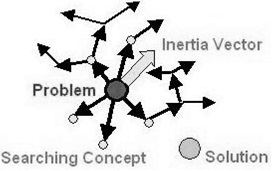
Figure 3. Methods are based on Trial and Error approach
A new methodology is required to solve problems systematically. That methodology is TRIZ. TRIZ is Russian acronym for The Theory of Inventive Problem Solving. TRIZ was created and developed in former USSR by Russian engineer and inventor G.S.Altshuller and his followers. TRIZ is a science that studies Evolution of Technical Systems to develop methods for inventive problem solving.
The main distinction of TRIZ from creativity methods that are based on Trial and Error approach is that the TRIZ offers directed and algorithmic searching of solution instead of chaotic generation of ideas (see Figure 4).
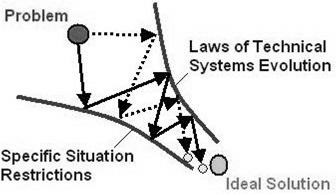
Figure 4. TRIZ directs a problem solving process to Ideal Solution
The first main idea of TRIZ is that the technical systems develop in concordance with the objective Laws of Technical Systems Evolution. These Laws can be studied and applied to inventive problem solving without a lot of trails and errors. Laws of Technical Systems Evolution were discovered through analysis of more than 1 500 000 patents and evolution histories of different technical systems.
The main Law of Technical Systems Evolution is increasing Ideality of System. Ideal System is a System in which Quantity of Material, Volume, Power consumption and other expenditures tend to zero, but its functionality increases.
The second main idea of TRIZ is that the technical systems evolve through appearance, intensification and overcoming contradictions. Solving problem is a step in the development of System. Problem is difficult through existing hidden and explicit contradictions. Special algorithmic tools based on Law of Technical Systems Evolution were developed to work with unclear problem description and to transfer it into problem formulation in contradiction view step by step and after that to a new ideas and concepts. There are Algorithm of Inventive Problem Solving (ARIZ), Inventive Standards System, Altshuller Contradiction Matrix, Scientific Effects pointers.
Steps and rules of these TRIZ tools direct of problem solving process to a strong solutions area which is situated near from Ideal Solution through overcoming contradictions and using existence resources (see Figure 4).
TRIZ is a method for developing technology, which can be adapted to all the area that possess problems, it can be used for improving the conventional system, proving a causal relationship and developing new concept products, process, strategy of R&D.
3.1 Contradictions and contradiction Matrix
Contradiction is one of the main concepts of TRIZ. From TRIZ viewpoint, every difficult problem contains contradiction. In order to solve a problem it is necessary to find and resolve contradiction. TRIZ classifies Administrative, Technical and Physical contradictions.
Administrative Contradiction shows that problem has appeared but does not show the problem reason and does not suggest the ways for solving this problem.
To solve problem it is necessary to carry out analysis of problem and formulate Technical Contradiction when an improving one parameter of technical system causes a worsening another parameter of one. For example, thick steel sheet makes a car more safe, but the weight of car increases.
Physical Contradiction is a situation when two opposite properties are required from physical condition of the one element of technical system. For example, steel sheet for car must be thick in order to make car more safety and must be thin in order to make car lighter.
Altshuller tried to collect ways of resolving contradictions - inventive principles that were used by engineers and inventers in during their practice. For that target Altshuller selected and investigated strong solutions from patents descriptions. As a result he collected 40 different inventive principles that were used for resolving contradictions from different engineering fields.
But the most important Altshuller's discovery was that the same technical contradiction from different engineering fields might be resolved by using the same inventive principles.
Using 40 inventive principles and 39 universal engineering parameters Altshuller built Contradiction Matrix for resolving 1250 typical technical contradiction (see Figure 5.).
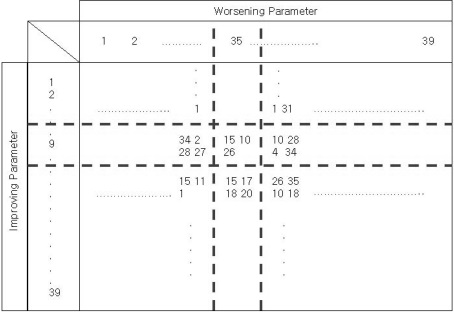
Figure 5. Altshuller Contradiction Matrix
The process of problem solving by using Altshuller Contradiction Matrix is presented on Figure 6.
According this process, at first, it is necessary to select interactive objects (Tool - Product) that create undesirable effect as a result its interaction. After that, to determine what Tool or Product's parameter must be improved - (A parameter) by applying one of the known and suitable ways.
Then it is necessary to find what parameter of another object will be worsened after applying this way - (B parameter) and to formulate Initial Contradictions between improving and worsening parameters.
But in order to use Contradiction Matrix we have to reformulate Initial Contradictions into Typical Contradiction using 39 standards parameters from Altshuller Matrix instead of real engineering parameters.
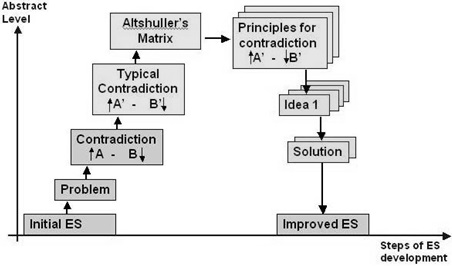
Figure 6. The process of problem solving by Altshuller Contradiction Matrix
After that Contradiction Matrix can give some Inventive Principles for resolving this typical contradiction. Applying recommendations from these Inventive Principles to Tool and Product we may find some ides how change interactive objects in order to resolve contradiction and formulate new concept of technical system.
The contradiction concept is very similar to the coupling in Axiomatic Design approach.
4. Finding new DPs by using Contradiction Matrix
To change coupled design or decoupled design to uncoupled design, Contradiction Matrix can be applied to Axiomatic Design. A specific mapping process is required because DPs is expressed by common words.
Firstly, the proper standard parameter is selected. Design matrix's DPs should be changed to standard parameters. Secondly, suitable inventive principles are found in the Contradiction Matrix. Finally, new DPs are derived from the inventive principles and the design matrix is uncoupled.
A lot of design problem result from coupled design that violates Independence Axiom. In coupled design, it is hard to control DPs because some DPs of design matrix affect more than two FRs. Therefore engineers try to change the coupled design into uncoupled or decoupled design by finding new DPs.
Finding new DPs is usually done intuitively or empirically. If the engineer doesn't have much experience and knowledge, it can be time-consuming job. To generate new DPs, TRIZ methods that resolve contradiction can be used. It is true that coupled design contains technical contradiction or physical contradiction.
TRIZ offers two tools for resolving contradictions:
- Altshuller Contradiction Matrix which is used for resolving technical contradiction mainly;
- Set of 11 Principles from ARIZ for resolving physical contradiction.
In this paper, Uncoupling Method with Altshuller Contradiction Matrix is considered only. The flow chart of uncoupling process from Axiomatic Design with Altshuller Contradiction Matrix application is shown on Figure 7.
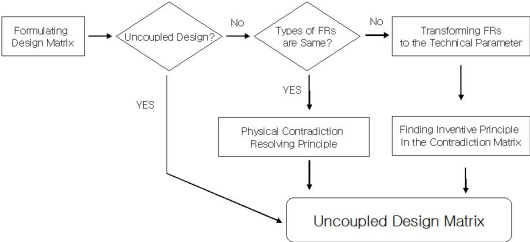
Figure 7. Flow chart of uncoupling process
STEP 1: Formulating designing problem
Most of customers notice the problem, but usually it is hard for them to define the nature of problem. First of all, the designer should make hierarchical structure and design matrix by using Axiomatic Design.
STEP 2: Determining the type of contradiction
The type of contradiction must be analyzed to select proper contradiction resolving method. In case that one FR requires high temperature and the other FR requires low temperature at the same time, it is a Physical Contradiction. Physical Contradictions Resolving Principles may be used to solve this kind of design problem.
In case that the type of coupled FRs is different, for example, the rotational speed of CD-ROM increases while the noise of CD-ROM becomes louder. It is technical contradiction problem and the Altshuller Contradiction Matrix may be used to make uncoupled design.
STEP 3: Changing coupled FRs into standard parameters
In order to generate new DPs through Altshuller Contradiction Matrix, each coupled FRs should be converted to one of the 39 standard parameters.
STEP 4: Finding Inventive Principles in the Altshuller Contradiction Matrix
Using standard parameters found in Step 3, Inventive Principles can be chosen in the Altshuller Contradiction Matrix.
STEP 5: Generating new DPs which make design uncoupled
To generate new DPs that satisfy Axiom 1, the process shown in Figure 6 is carried out, because the preliminary ideas from Contradiction Matrix are very abstractive like Segmentation, Prior Action, etc.
Each Inventive Principle has a lot of examples based on patents. From time to time, applying the Examples of the Inventive Principles to the design problems can derive solutions.
Using these processes, the new concept of DPs that satisfy Axiom 1 is generated. And the design matrix is changed into uncoupled design.
5. Improving tensile strength of polymer insulator
LG Cable produces a mechanical device called Polymer Insulator, which is a component for holding cable and insulate tower from cable. Figure 8 shows the Polymer Insulator and its interaction with cable and tower.
In 2003, LG Cable decided to improve the performance of Polymer Insulator because the customers want Polymer Insulator that can endure tensile strength over 24tons. At that time the maximum tensile load of LG Cable's product was 22tons. Also LG Cable planned to develop new type of 345kV Polymer Insulator. In order to avoid same problem, it was necessary to find new design concept of 154kV type Polymer Insulator.
Figure 8. Polymer Insulator
Figure 9 shows conventional crimping process of Polymer Insulator. In case of 154KV cable, the Polymer Insulator must hold over 24ton tensile load. In order to increase tensile load of Polymer Insulator, Fitting Metal should be compressed more.
Figure 9. Compressing of Fitting Metal and Crack in FRP Rod
Higher compressing force will generate stress concentration in Fiber Reinforced Plastic Rod (FRP Rod), and it will make crack on FRP rod. New design solutions that increase tensile strength without breakage of FRP Rod are required.
In order to assemble polymer insulator, they put FRP rod inside of fitting metal. After that, fitting metal is compressed and strong bonding force is generated between fitting metal and FRP rod. During compressing fitting metal, stress concentration is occurred on the FRP rod. It restricts maximum compressing force. This situation can be expressed by design matrix in STEP 1.
The process discussed previously in Figure 7 is used to develop new design. Let's consider how we can use step of offered flow chart of uncoupling process in order to develop a new design of Polymer Insulator.
STEP 1: Formulating designing problem
The design matrix can be formulated as follows
FR1: Improving Tensile Strength of Polymer Insulator over 24tons
FR2: Preventing the breakage of FRP Rod
DP1: The compressing force applied to the fitting metal
DP2: The solidity of the FRP Rod

If high compressing force is applied at the Fitting Metal of Polymer Insulator to hold the FRP Rod tightly, it will also destroy the FRP Rod. If the force is reduced in order to protect FRP Rod, the tensile strength cannot be increased over 24tons.
STEP 2: Determining the type of contradiction
The tensile strength and the safety of FRP rod are different type of parameter. The design problem has a technical contradiction. The Contradiction Matrix is applied to resolve that kind of contradiction.
STEP 3: Changing coupled FRs into standard parameters
The FRs of this design matrix is now converted to standard parameters.
FR1: Improving parameter:
Tensile Strength of Polymer Insulator over 24ton - 10. Force
FR2: Worsening parameter:
Preventing the breakage of FRP Rod - 30. Object-affected Harmful Factor
STEP 4: Finding Inventive Principles in the Altshuller Contradiction Matrix
In the Contradiction Matrix these Inventive Principles are found:
N1 - Segmentation
N35 - Parameter Changes
N40 - Composite materials
N18 - Mechanical Vibration
STEP 5: Generating new DPs which make design uncoupled
Usually the Inventive Principles do not give a ready for use solutions but they guide a searching process in perspective directions and give general recommendations how to change interacting components of TS in order to resolve contradiction.
Complex problems are resolved by applying a combination of Inventive Principles or combination of Principles with Physical Effects.
So for Polymer Insulator the "Segmentation" Inventive Principle gives partial idea that inner surface of Fitting Metal may be divided on some part in order to distribute compressing force to FRP Rod more uniformly and prevent cracking.
And the next recommendation from Segmentation Principle shows how to develop this idea by increasing degree of segmentation from a solid to a Loose Body or a Liquid.
According "Parameter Changes" Inventive Principle it is necessary to make inner surface of Fitting Metal more flexible in order to distribute compressing force to FRP Rod more uniformly. This recommendation supports ideas from "Segmentation" Principle because Loose Body is more flexible then solid metal but can distribute compressing force more uniformly and holds FRP Rod safely.
As a result of using mentioned Inventive Principles and physical and geometrical properties of Loose Body the new concept of Polymer Insulator design was developed (see Figure 10).
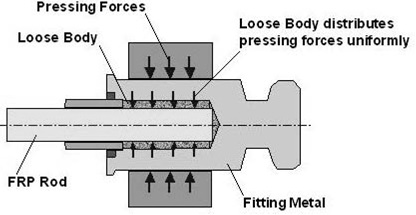
Figure 10. Putting Loose Body between Fitting Metal and FRP Rod
It is proposed to place a Loose Body (for example, metal or abrasive powder) between Fitting Metal and FRP Rod. In during pressing operation Loose Body will distribute pressing force more uniformly along the surface of FRP Rod and prevents its breakage.
Compressed Loose Body has the similar property as a solid material and can hold FRP Rod safely in during loading period
Finally the new FRs and DPs are selected and the design matrix becomes uncoupled.
FR1: Improving parameter: Tensile Strength of Polymer Insulator;
FR2: Worsening parameter: Preventing the breakage of FRP rod
DP1: The pressing force applied to the metal fitting
DP2: The loose material between fitting metal and the FRP rod

Experiment has been done to verify the new design concept. Al oxide and Silica Carbide (C) and Glass Silica Carbide (GC) powder from 5?m to 100?m is used as loose material.
Loose material distributes the stress concentration, and the crimping force could be increased by 10bar without any crack. As a result, the tensile strength is increased to 24tons.
Table 1 shows the result of experiment. Every loose material satisfies need tensile strength. The quality of Polymer Insulator is improved.

Table 1. Experiment Result of Tensile Strength Test
6. Conclusion
In order to avoid final product's cost and failure problems, satisfying Axiom 1 in design process is important, and the design matrix should be uncoupled.
To change coupled design to uncoupled one and develop the new concept of design, intuition and inspiration is not enough. More logical and algorithmic process is needed. The main idea of coupled design is similar to the Contradiction concept from TRIZ. The uncoupling process can be done more effectively through the Contradiction Matrix.
The design matrix of Polymer Insulator was decoupled design in the first time, but the design matrix was changed into uncoupled design through these STEPs.
These steps are used to apply contradiction-resolving process to Axiomatic Design:
- Formulating problem;
- Determining the type of contradiction;
- Changing FRs to standard parameters;
- Finding inventive principles in the Contradiction Matrix;
- Generating new DPs that make design uncoupled.
Originally the tensile strength of Polymer Insulator was 22 tons. According to the suggested algorithm and steps, the "Segmentation" inventive principle is applied to the system. Loose material is used to segment the surface of FRP rod.
As a result, the required tensile strength of new Polymer Insulator is achieved. The new design matrix that satisfies Axiom 1 is generated. This example shows that it is very useful way to apply Contradiction Resolving Principles to Axiomatic Design.
References
[1] Genrich Altshuller, (1997), 40 Principles, Technical Innovation Center.
[2] Suh N.P., (1990), The Principles of Design, New York: Oxford University Press, 1990.
[3] Yuri Salamatov, (1999), The Right Solution at the Right Time: A Guide to Innovative Problem Solving, Insytec BV.
[4] Kai Yang, Hongwei Zhang, (2000), "Enhancing Robust Design with the Aid of TRIZ and Axiomatic Design", International Conference on Axiomatic Design, ICAD '2000, Cambridge, June 21-23.
[5] Genrich Altshuller, (1996), And Suddenly the Inventor Appeared: TRIZ, the Theory of Inventive Problem Solving, Technical Innovation Center.
[6] Suh N.P., (2001), Axiomatic Design: Advances and Applications, New York: Oxford University Press.
[7] M. Kumosa, D. Armentrout, L. Kumosa, Y. Han, S. H. Carpenter, (2002). "Analyses of Composite insulators with Crimped End Fittings - Suitable Crimping Condition", Composites Science & Technologies 62(2002), 1209-1221
| 










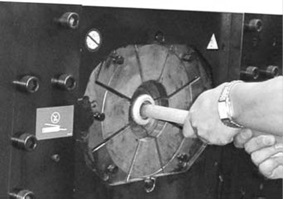
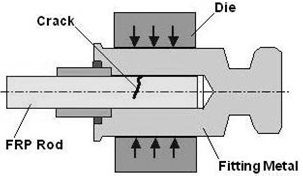




 вверх
вверх